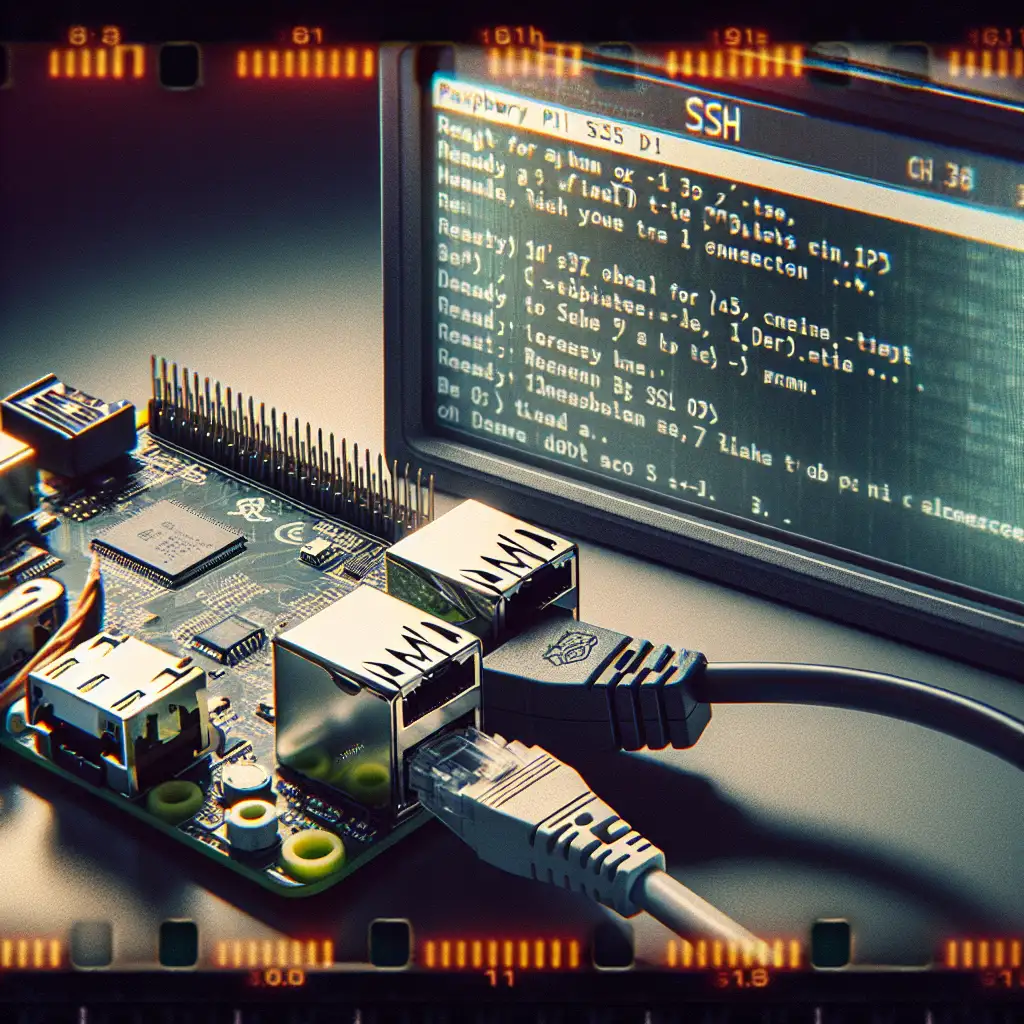Mastering SSH Access to Your Raspberry Pi on a Local Network: A Step-by-Step Guide
Forget complex setups that waste time—learn how to effortlessly establish reliable SSH connections to your Raspberry Pi on your home network, with practical tips to avoid common pitfalls and enhance security straight away.
If you’re working with a Raspberry Pi, one of the essential skills you’ll want to master is connecting to it remotely via SSH (Secure Shell). SSH lets you manage your Pi without needing a keyboard, mouse, or monitor plugged directly into it—which is especially helpful for automation projects, software development, or troubleshooting while the Pi is tucked away somewhere.
In this guide, we’ll focus on how to SSH into your Raspberry Pi on a local network easily and securely.
Why SSH Your Raspberry Pi Locally?
SSH provides a powerful and secure way to remotely control your Raspberry Pi over your home network. When connected via SSH, you can:
- Install software and updates.
- Edit configuration files.
- Run scripts and monitor processes.
- Transfer files securely.
- Troubleshoot errors without physical access.
Plus, once comfortable with SSH on your local network, you can expand to remote access over the internet.
Step 1: Get Your Raspberry Pi Ready for SSH
Enable SSH on Your Raspberry Pi
By default, recent versions of Raspberry Pi OS disable SSH for security reasons. Here’s how to enable it:
Option A: Using Raspberry Pi OS Desktop
- Boot up your Raspberry Pi with a monitor and keyboard attached.
- Open the Raspberry Pi Configuration tool from the Preferences menu.
- Navigate to Interfaces tab.
- Set SSH to Enabled.
- Click OK and reboot if prompted.
Option B: Headless Setup (No Monitor/Keyboard)
- Flash your SD card with Raspberry Pi OS using tools like Raspberry Pi Imager.
- After flashing, eject and reinsert the SD card on your computer.
- In the root directory of the boot partition (often accessible as a USB drive), create an empty file named
ssh(no extension). - Safely eject the SD card and insert it into the Pi.
This “ssh” file tells the OS to start the SSH server on boot.
Step 2: Connect Your Raspberry Pi to Your Local Network
Make sure your Raspberry Pi is connected via Ethernet or Wi-Fi to the same local network as your PC or laptop from which you'll connect.
Tip: Use Ethernet if possible for more stable connections but Wi-Fi works well for most home setups.
Step 3: Find Your Raspberry Pi’s Local IP Address
Before connecting via SSH, you need the IP address of your pi in your network:
Method 1: Using Router Admin Page
Log into your router’s admin dashboard (usually via 192.168.x.1 or 10.x.x.1) and check connected devices for one named raspberrypi or check for new devices that appeared after plugging yours in.
Method 2: Using Command Line Tools
On Windows:
arp -a
Look through listed devices for one in your subnet unfamiliar before.
On macOS/Linux terminal:
nmap -sn 192.168.1.0/24
(Replace 192.168.1 with your network prefix.)
You might also try pinging common addresses like ping raspberrypi.local if Bonjour/mDNS is enabled (default in recent Raspbian).
Step 4: Connect via SSH from Your Computer
Once you have the IP address (say 192.168.1.15), open a terminal (Linux/macOS) or PowerShell/Command Prompt (Windows) and run:
ssh pi@192.168.1.15
- The default username is
pi. - The default password is usually
raspberry— change this ASAP!
If Using Windows Without Built-in ssh:
Windows 10+ includes OpenSSH by default in PowerShell; alternatively, use PuTTY.
Step 5 (Optional but Recommended): Change Default Password & Use SSH Keys
Once logged in, improve security immediately.
Change Password
passwd
Follow prompts to set a new password.
Set Up SSH Key Authentication
On your client machine (your PC), generate an ssh key pair if you don’t have one:
ssh-keygen -t ed25519 -C "your_email@example.com"
Copy the public key to your Raspberry Pi:
ssh-copy-id pi@192.168.1.15
This allows passwordless login moving forward and protects against brute force attempts when password login is disabled later.
Troubleshooting Common Issues
-
SSH connection timed out / refused?
-
Confirm that SSH service runs on RasPi:
sudo systemctl status ssh -
Enable/start it if needed:
sudo systemctl enable ssh && sudo systemctl start ssh -
Check firewall settings blocking port 22.
-
-
Can’t find IP address?
- Reboot router/Pi and scan again.
- Connect directly with HDMI/keyboard temporarily for diagnostics.
-
Permission denied?
- Double-check username (
pi). - Confirm password correctness or use keys if set up.
- Double-check username (
Wrapping Up
By now, you should be able to confidently:
- Enable SSH on your Raspberry Pi,
- Identify its local IP,
- Connect reliably over Wi-Fi or Ethernet,
- And optionally boost security using key-based authentication.
No more fumbling around hooking up peripherals or sitting front of the screen—remote managing your projects becomes streamlined so you can focus on what really matters: building cool things with your Raspberry Pi!
Quick Recap Command Cheatsheet
| Task | Command/Action |
|---|---|
| Enable ssh headless | Create empty ssh file in boot partition |
| Find IP address | Router page / arp -a / nmap -sn <your-subnet> |
| Connect over ssh | ssh pi@<IP_ADDRESS> |
| Change password | passwd |
| Generate ssh key | ssh-keygen -t ed25519 |
| Copy ssh key | ssh-copy-id pi@<IP_ADDRESS> |
Feel free to drop questions below—happy hacking!
If this guide helped you master SSH access on your local network, share it with fellow makers and developers looking to get more from their Raspberry Pis.
